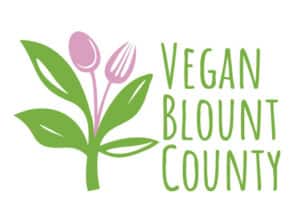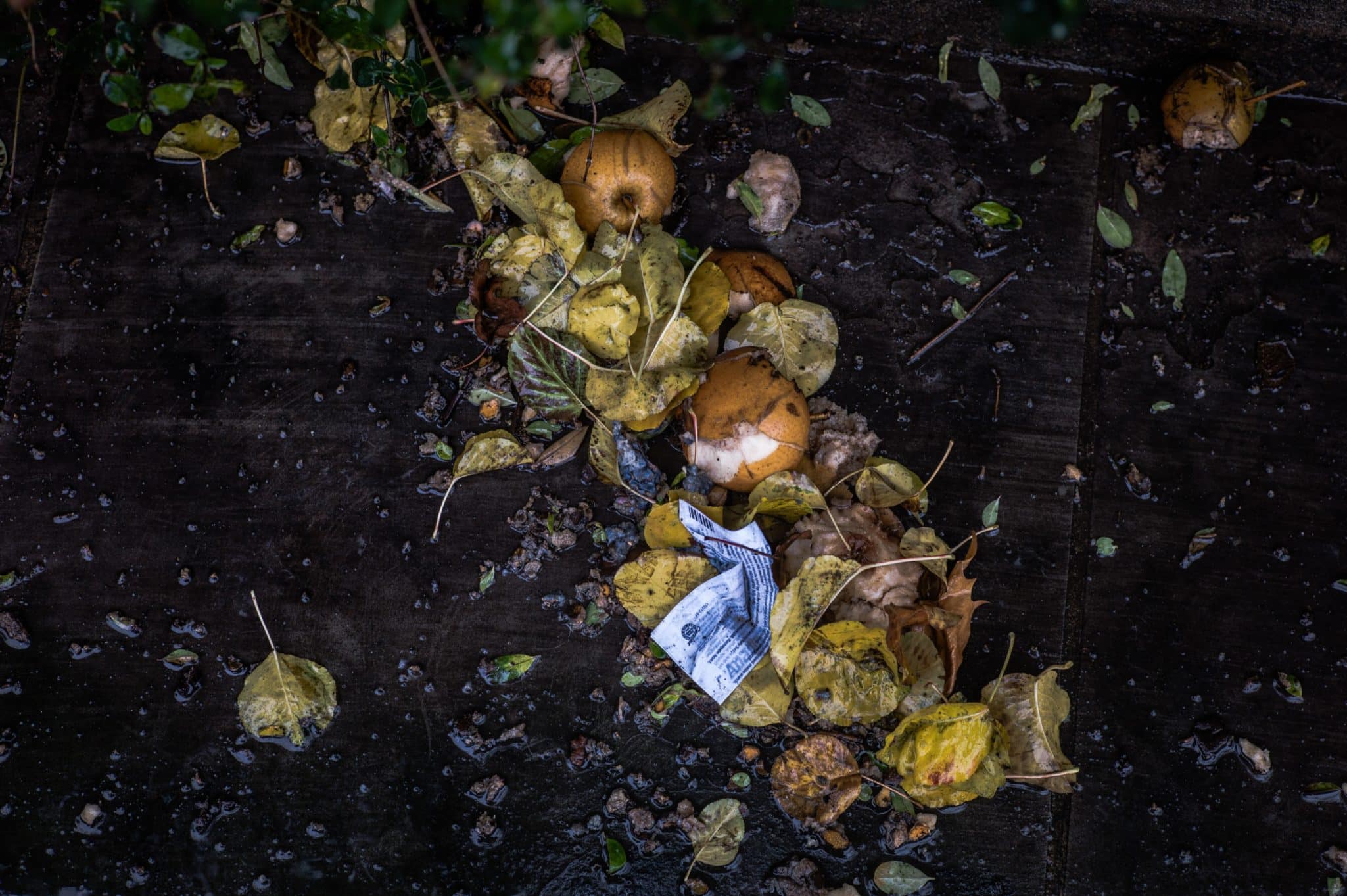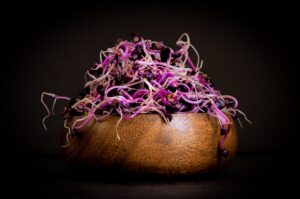- How To Learn From Melanie Joy’s Enlightening Concept of Carnism To Improve the World - June 24, 2024
- Unwrap Compassion: Unique Gifts for Vegans That Inspire and Delight - December 11, 2023
- Enjoy The Delightful Plant People Boutique: Beautiful Plants and Lovely Snacks - November 20, 2023
My shoes are caked with dirt. I’m sweaty and exhausted. But I have the biggest smile on my face. Why? Because it’s the time of year when I check my compost. And my easy, eco-friendly compost is absolutely gorgeous. Crumbly, clean-smelling, and full of worms.
It is late winter, and I am getting ready to add plants and seeds to my raised garden beds. I’m also dividing plants that are getting crowded so they can grow in a roomier place.
My plants are going to drink up all the loveliness of this compost. And I’m making my yard more eco-friendly.
Plus, it was super-easy.
Why is Compost Eco Friendly?
 Compost is not a fertilizer in itself but is eco-friendly because it enhances the soil.
Compost is not a fertilizer in itself but is eco-friendly because it enhances the soil.
- Compost keeps nutrients in the soil for plants to access.
- It helps the soil hold water and prevent runoff, which reduces pollution in our waterways.
- It reduces the soil’s tendency to compact, helping prevent runoff and supporting healthier plants.
- Yard waste that is sent to the landfill contributes to greenhouse gas emissions. Composting your yard waste makes your garden healthier. Why not use what you already have?
Your compost is gold to your soils. And so much better than what you buy in a store, which might contain things you don’t want, like herbicide and weed seeds.
You don’t need a lot of compost to make a difference. Half of your soil is made up of water and minerals. Organic matter is just 5% of the total. But that 5% contains a fantastic number of organisms making your yard a better place for plants.
Composting the Easy Way
There are many ways to compost, but this is the easiest one. I put out a bin and add yard and kitchen waste all year.
I never turn it or do anything. And, in return, nature takes my waste and gives me back garden nectar.
You can make easy, eco-friendly compost, too. When you google composting, you’ll see articles about many different compost methods. Ignore them (for now.)
Step 1
Grab an old trash can, some wire fencing, or whatever you have in your house that will hold your waste material. If you don’t have anything suitable, you can make this process super-super easy by starting a compost pile on the ground. I can’t do that in my yard because my dogs would consider it a buffet, so I use a container.
Step 2
If you use a trash can or other container, drill holes in the sides and bottom. This is for airflow and drainage. I was surprised the first year that garden worms used these holes to reside in my compost pile. These worms join a multitude of other good creatures that live in the eco-friendly compost.
Step 3
Throw your kitchen, household, and yard waste into your bin.
Step 4
When it is full, let it sit.
Step 5
After six months to a year, dump it out and revel in your eco-friendly amazingness.
One downside of the super-easy approach is that some things won’t have composted completely. One way to prevent this is to turn your compost regularly. But then this wouldn’t be the super-easy approach, right?
So, heave those sticks, corncobs, and such back into the bin and let them have more time.
How to Use Your Compost
Place the compost in the hole when you are putting in new plants.
Place the compost on the soil around existing plants. Rain and worms will take the nutrients into your soil for your plant to use.
[Want to get started in environmental activism? Check out this resource.]
Want to Try Other Eco-Friendly Methods?
 I told you to ignore other methods because I wanted you to have the most effortless composting process possible. But there are other ways to compost, too. I use several methods because I want compost available throughout the year.
I told you to ignore other methods because I wanted you to have the most effortless composting process possible. But there are other ways to compost, too. I use several methods because I want compost available throughout the year.
The Fast Approach
Bokashi is a Japanese method for composting. You place your kitchen waste in a receptacle and add the bokashi starter powder. This is basically pickling your kitchen waste. After 2 weeks, it is ready, and weirdly, it looks the same as when you put it in. But when you bury it in your garden, it breaks down into compost fast.
The Slow Approach
(Yes, it is even slower than the super-easy method.)
Hügelkultur is a composting and bed-building method. Scope out a place for a new bed, clear it off and start building your Hügelkultur mound with branches, sticks, and other garden waste. After several years you’ll have a beautiful garden bed. How eco-friendly is that?
I’ve never used this technique, but I’ve got something similar I’m trying in my yard now. Years ago, we had to make the terrible decision to take out a maple tree. Its branches hit power lines on a windy day, caught on fire, and took out electricity to our neighborhood.
I made a play area for my dogs by stacking the maple sections in a stairstep fashion, so they could enjoy climbing up and jumping off. We nicknamed it Pride Rock because one of our dogs would climb to the top and survey his domain.
But of course, you know what happened. Nature took its course and rotted these massive logs. It is now a collapsed heap of wonderfulness, with mushrooms and other plants taking hold. I’m leaving it as an eco-friendly shelter for critters, but eventually, I’ll turn this into a garden bed.
The Premium Approach
Vermicomposting is using worms to process your kitchen waste. The result is something much richer than regular compost. Just small amounts of the worm castings provide nutrients to plants.
Need More Help?
Your local extension office is a great place to ask for help. Volunteer Master Gardeners will answer questions and, in some cases, come out to your property to assess your landscape.
When you google garden questions, add the word extension and your location at the end. Then you’ll get research-based resources tailored for your area.
READ NEXT
How To Get Started in Vegan Permaculture
Happy Birthday to Me: How I Found New Life as a Vegan
My Journey of Compassion For All Beings




